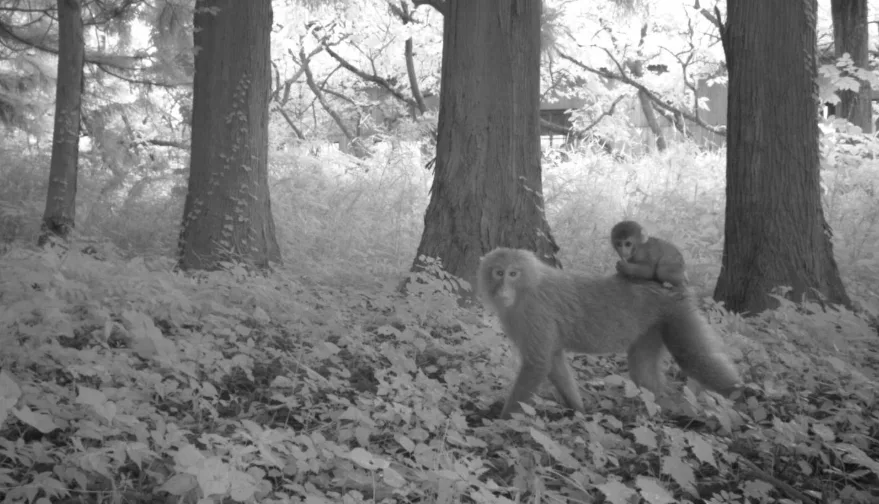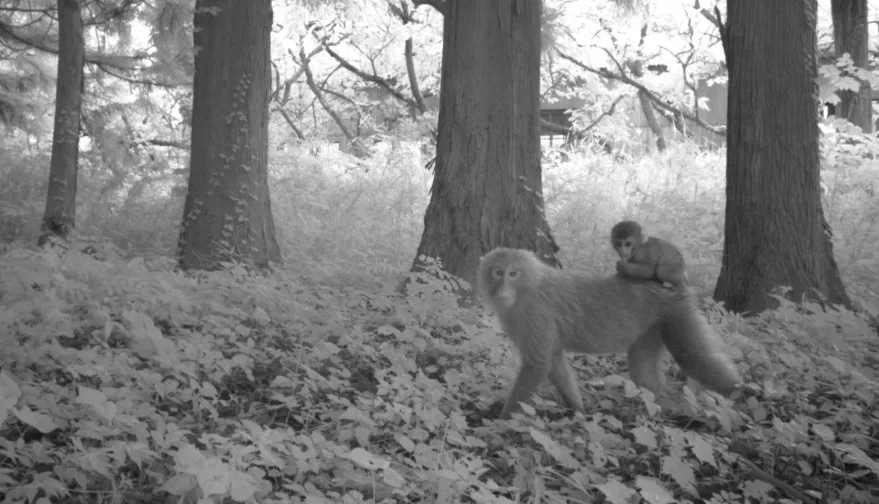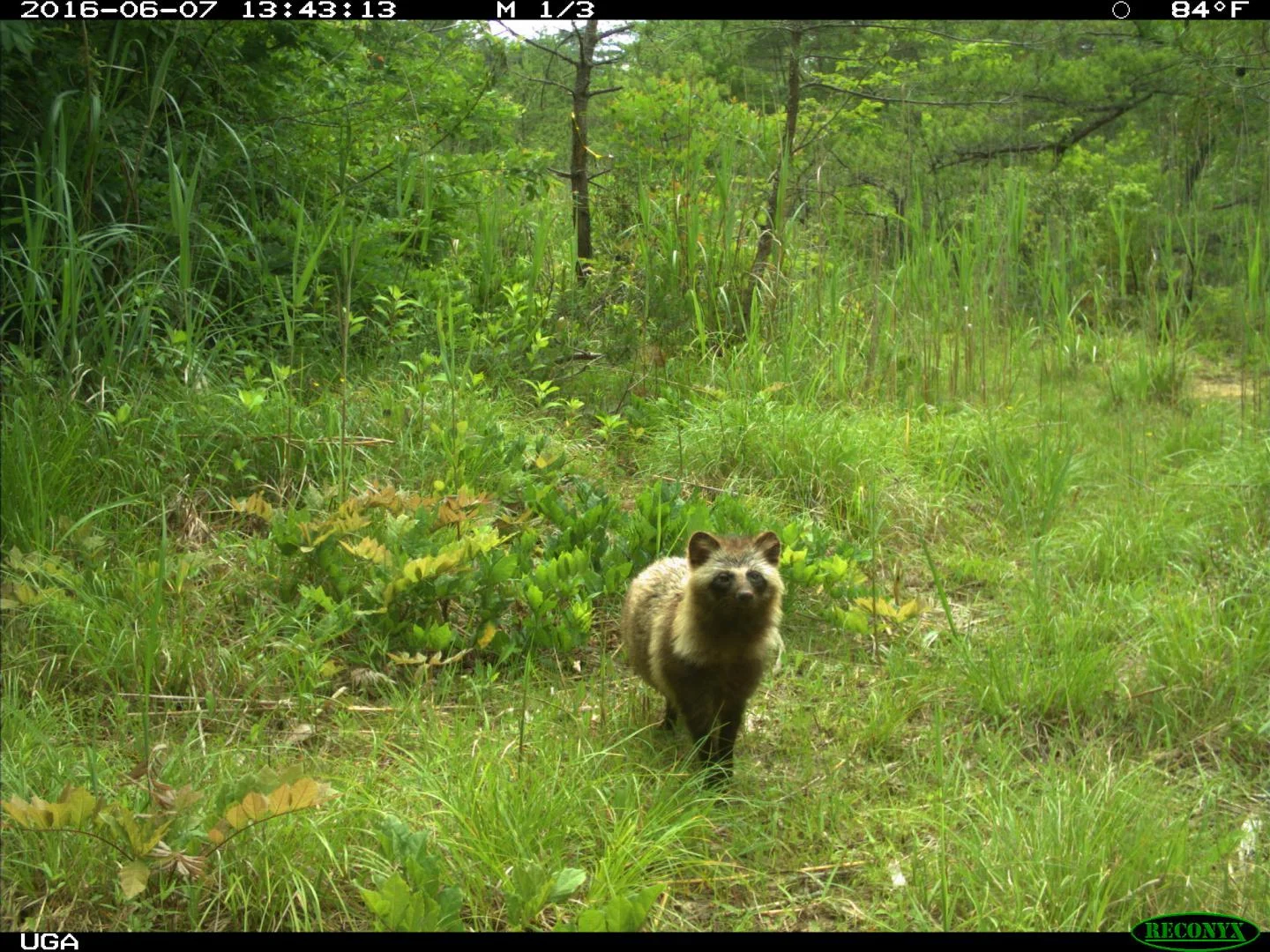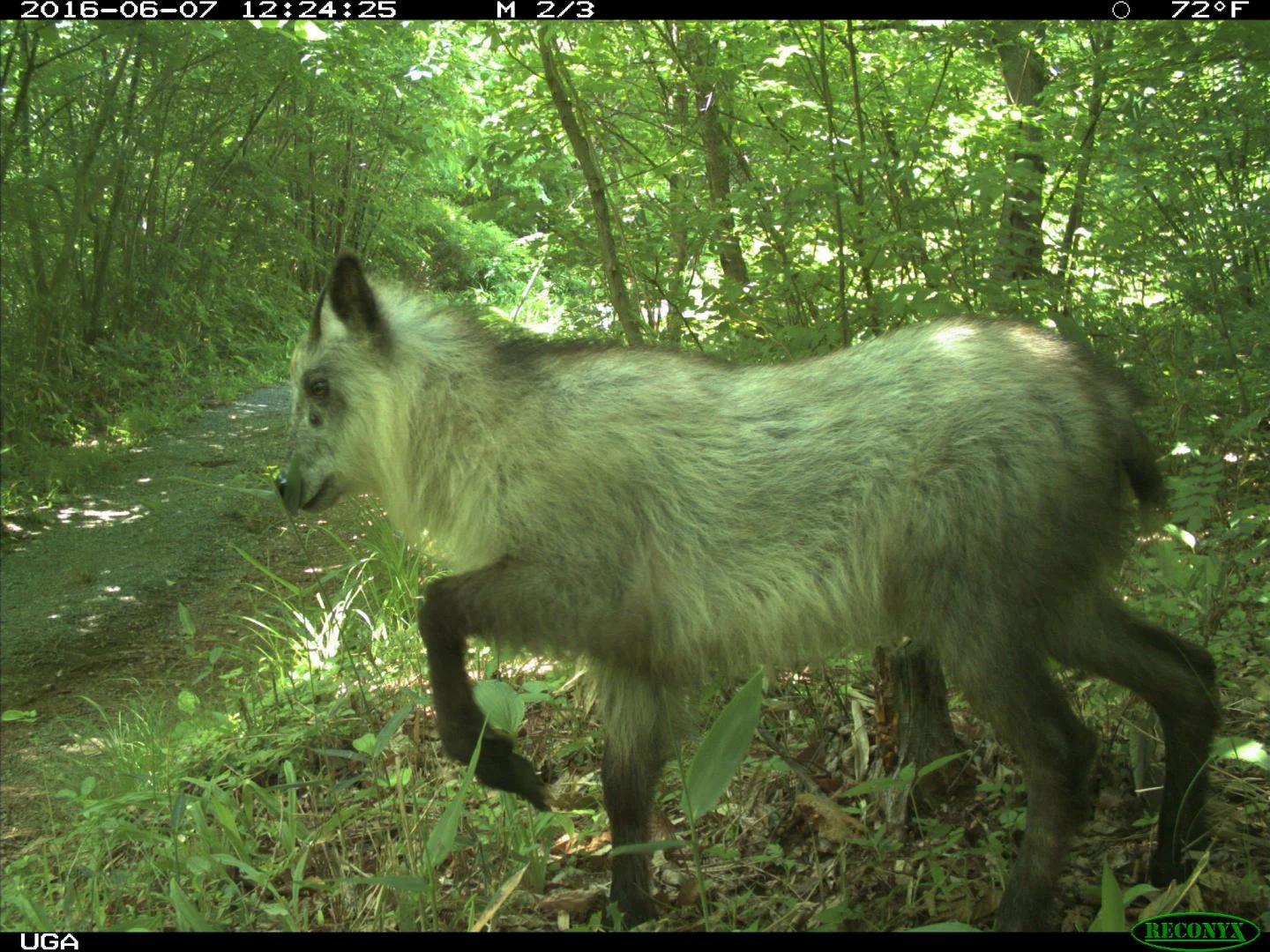
Animals are 'thriving' in human-evacuated areas of Fukushima
The study found a surpisingly high number of animals living in human-evacuated areas.
Wildlife is flourishing in areas of Fukushima, Japan, nearly 10 years after an earthquake triggered a tsunami that overwhelmed the Daiichi nuclear plant, leading to nuclear meltdowns, explosions, and the release of radioactive contamination.
The new, camera-led study on wildlife in Fukushima was conducted by researchers at the University of Georgia (UGA). Scientists captured 267,000 wildlife photos and recorded more than 20 species, including wild boar, Japanese hare, macaques, pheasant, and fox, in various areas of Fukushima void of human life.

Macaque monkeys captured during the study. Courtesy: UGA.
"Our results represent the first evidence that numerous species of wildlife are now abundant throughout the Fukushima Evacuation Zone, despite the presence of radiological contamination," said lead author James Beasley, a UGA wildlife biologist.

A raccoon dog -- which is a relative of the fox -- captured on camera. Courtesy: UGA.
"This suggests these species have increased in abundance following the evacuation of people."
Species that often conflict with humans -- like wild boar -- were "predominantly" seen on camera in evacuated areas, Beasley added.
For their paper, researchers selected three zones: One that was human-evacuated due to high levels of contamination, one were human activity has been restricted due to intermediate levels, and one that is human-inhabited.

The Japanese serow (pictured above) was the only exception identified. While normally far-removed from humans, they were most frequently seen in human-inhabited upland areas. Researchers suggest this might be to avoid the boar population in evacuated zones. Courtesy: UGA.
"For 120 days, cameras captured over 46,000 images of wild boar," reads a statement by the study's authors.
"Over 26,000 of those images were taken in the uninhabited area, compared to approximately 13,000 in the restricted and 7,000 in the inhabited zones."
Analysis of the location of the animals -- such as their proximity to roads, mountains, and green spaces-- suggests human activity, elevation and habitat type are the main factors influencing the "abundance", rather than the presence of radiation in the environment.
The only exeption appears to be the Japanese serow, a goat-like mammal that normally lives far from humans. In the study, they were most often observed in upland human-inhabitated areas. Researchers suspect this is an adjustment to avoid the uptick in boar populations in evacuated areas.
While the animals observed appear to be in good health, the study does not assess their physiology.
The paper has been published in the Journal of Frontiers in Ecology and the Environment.











